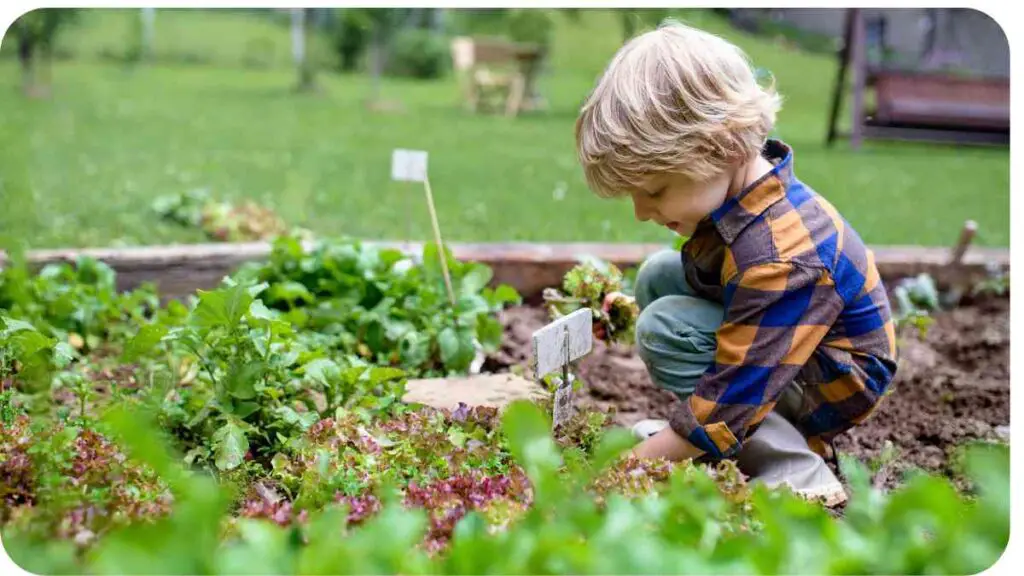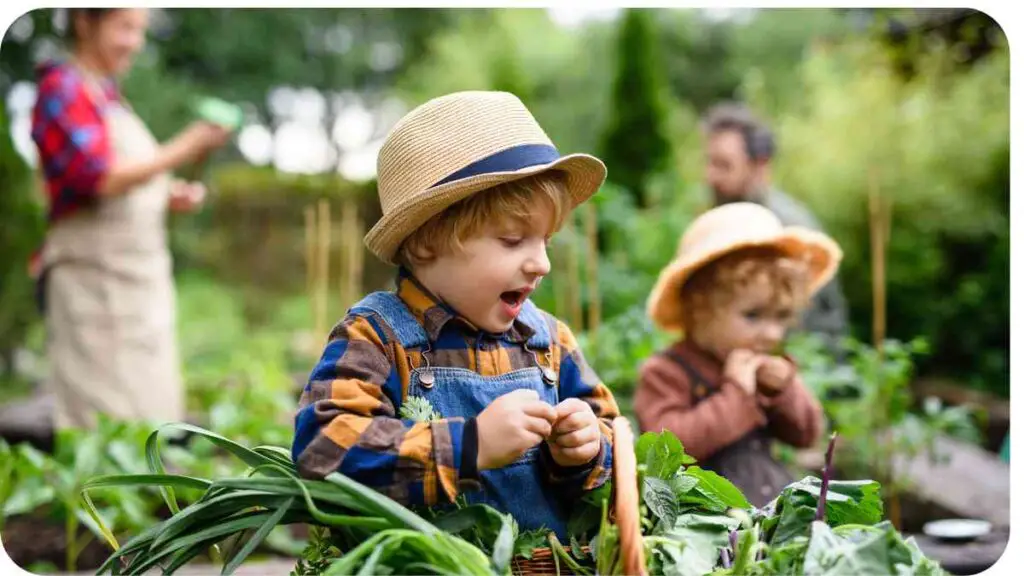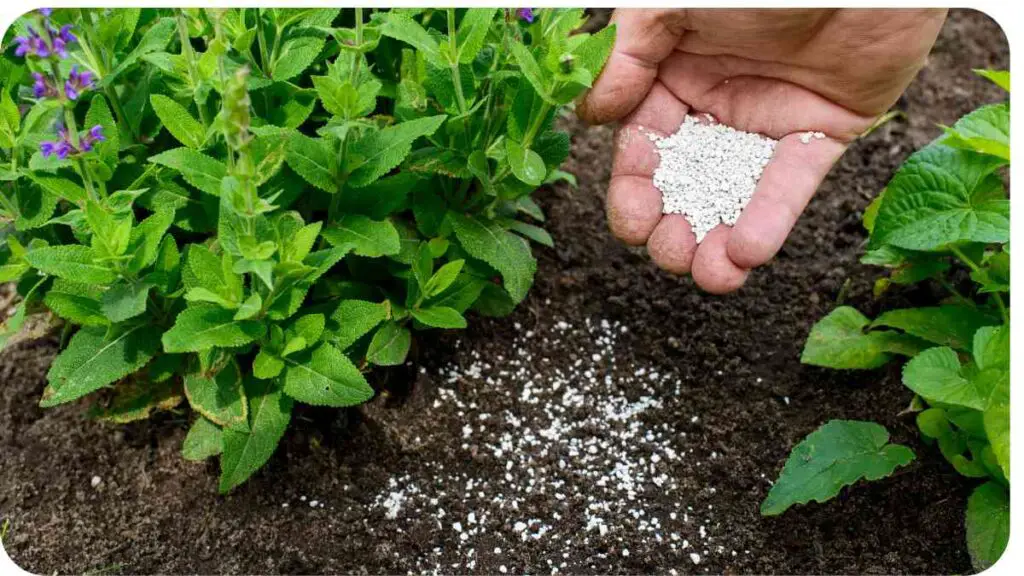Starting a small garden in your backyard can seem like a daunting task, but trust me, it’s worth every bit of effort. Imagine stepping out your back door and picking fresh vegetables for your dinner or cutting flowers for your table.
Sounds like a dream, right? Well, let’s turn that dream into reality. Whether you have a green thumb or not, this guide will walk you through each step of starting your own backyard garden, from selecting the right plants to harvesting your first crop.
| Takeaways |
|---|
| 1. Choose a sunny location with good soil drainage. |
| 2. Plan your garden layout to maximize space and sunlight. |
| 3. Select plants that are suitable for your climate and growing season. |
| 4. Prepare your soil by testing and amending as needed. |
| 5. Regularly water, mulch, and fertilize your garden to promote healthy growth. |
| 6. Monitor for pests and diseases, taking prompt action when necessary. |
| 7. Harvest your produce at the right time for the best flavor and quality. |
| 8. Maintain your garden year-round with seasonal care routines. |
| 9. Troubleshoot common gardening problems proactively. |
| 10. Enjoy the process and the rewards of homegrown produce! |
Why Start a Small Garden?

You might be wondering, why should I start a small garden? The benefits are numerous. First, gardening is a fantastic way to get outside and enjoy nature. It’s also incredibly rewarding to grow your own food, knowing exactly where it comes from and how it was grown. Plus, gardening can be a great way to teach kids about nature and responsibility. And let’s not forget, a garden can add beauty and tranquility to your backyard.
Building resilience in your garden is crucial for overcoming challenges. Whether it’s unpredictable weather or pests, discover effective strategies to ensure your plants thrive year-round.
Choosing the Right Location
Picking the perfect spot for your garden is crucial. Most vegetables need at least six hours of sunlight each day, so choose a spot that gets plenty of sun. Additionally, consider the proximity to a water source and the quality of the soil in that area.
Table: Sunlight Requirements for Common Vegetables
| Vegetable | Sunlight Requirement |
|---|---|
| Tomatoes | Full Sun (6-8 hours) |
| Lettuce | Partial Shade (3-4 hours) |
| Carrots | Full Sun (6-8 hours) |
| Cucumbers | Full Sun (6-8 hours) |
| Spinach | Partial Shade (3-4 hours) |
Planning Your Garden Layout

Before you start digging, take some time to plan your garden layout. Think about the size of your garden and what you want to plant. You can use graph paper or an online garden planner to map out your garden.
Table: Garden Layout Ideas
| Layout Type | Description |
|---|---|
| Row Gardening | Traditional method, plants in rows |
| Square Foot Gardening | Intensive planting in small space |
| Raised Beds | Elevated beds for better soil control |
| Container Gardening | Growing plants in pots or containers |
Selecting the Right Plants
Choosing the right plants is essential for a successful garden. As a beginner, it’s best to start with easy-to-grow plants like tomatoes, lettuce, and herbs. Consider the climate in your area and the growing season when selecting plants.
Maximize your backyard space with innovative tower and wall gardens. These vertical gardening solutions not only optimize space but also enhance the aesthetic appeal of your outdoor sanctuary.
Table: Best Plants for Beginner Gardeners
| Plant | Growing Season | Notes |
|---|---|---|
| Tomatoes | Summer | Requires staking |
| Lettuce | Spring/Fall | Fast-growing, cool weather |
| Basil | Summer | Great for companion planting |
| Radishes | Spring/Fall | Quick harvest, easy to grow |
| Peppers | Summer | Requires warm temperatures |
Preparing the Soil
Good soil is the foundation of a healthy garden. Start by testing your soil to determine its pH and nutrient levels. Depending on the results, you may need to amend your soil with compost or other organic matter.
Table: Soil Types and Amendments
| Soil Type | Characteristics | Amendments |
|---|---|---|
| Sandy Soil | Drains quickly, low nutrients | Compost, organic matter |
| Clay Soil | Poor drainage, heavy | Sand, compost, gypsum |
| Loamy Soil | Well-drained, fertile | Organic matter, compost |
| Silty Soil | Smooth, retains moisture | Compost, organic matter |
Planting Your Garden
Now comes the fun part—planting your garden! Follow the instructions on the seed packets or plant tags for proper planting depth and spacing. Remember, different plants have different needs, so pay attention to the details.
Transform your patio into a personal paradise with creative design ideas. From cozy seating arrangements to elegant lighting, create a tranquil retreat that blends seamlessly with nature.
Table: Planting Depth and Spacing
| Plant | Planting Depth | Spacing Between Plants |
|---|---|---|
| Tomatoes | 1/4 inch | 24-36 inches |
| Lettuce | 1/8 inch | 12 inches |
| Carrots | 1/4 inch | 2-4 inches |
| Cucumbers | 1 inch | 36-60 inches |
| Basil | 1/4 inch | 12-18 inches |
Watering Your Garden
Watering is critical to your garden’s success. Most plants need about an inch of water per week, but this can vary depending on the plant and weather conditions. Water your garden in the early morning to reduce evaporation and help prevent diseases.
Table: Watering Needs by Plant Type
| Plant | Watering Frequency | Notes |
|---|---|---|
| Tomatoes | 2-3 times per week | Deep, infrequent watering |
| Lettuce | Daily | Keep soil consistently moist |
| Carrots | Weekly | Avoid waterlogging |
| Cucumbers | 2-3 times per week | Consistent moisture needed |
| Basil | Weekly | Allow soil to dry slightly |
Mulching and Weeding
Mulching helps retain moisture, suppress weeds, and improve soil quality. Apply a layer of mulch around your plants, but keep it away from the stems to prevent rot. Regular weeding is also essential to keep your garden healthy.
Table: Types of Mulch and Their Benefits
| Mulch Type | Benefits |
|---|---|
| Straw | Retains moisture, suppresses weeds |
| Wood Chips | Improves soil structure, long-lasting |
| Compost | Adds nutrients, retains moisture |
| Grass Clippings | Readily available, adds nitrogen |
| Leaves | Free, decomposes into rich humus |
Fertilizing Your Garden

To keep your plants healthy and productive, you may need to fertilize them. Use a balanced, all-purpose fertilizer or one that is specifically formulated for the plants you are growing.
Create a serene backyard retreat where you can unwind and reconnect with nature. Explore inspiring ideas to design a peaceful oasis that reflects your personal style and enhances your outdoor living experience.
Table: Types of Fertilizers
| Fertilizer Type | Nutrients Provided |
|---|---|
| Compost | Nitrogen, phosphorus, potassium |
| Manure | Rich in nitrogen, organic matter |
| Bone Meal | High in phosphorus, promotes rooting |
| Blood Meal | High in nitrogen, quick release |
| Fish Emulsion | Balanced nutrients, organic source |
Dealing with Pests
Pests can be a real headache for gardeners. The key is to identify them early and take action before they cause significant damage. There are many natural and organic methods to deal with pests, such as using beneficial insects or homemade sprays.
Table: Common Garden Pests and Solutions
| Pest | Solution |
|---|---|
| Aphids | Neem oil, ladybugs |
| Slugs | Beer traps, diatomaceous earth |
| Cabbage Worms | Bacillus thuringiensis (Bt), handpicking |
| Tomato Hornworms | Handpicking, parasitic wasps |
| Spider Mites | Insecticidal soap, predatory mites |
Harvesting Your Produce
Harvesting is the most rewarding part of gardening. Knowing when to harvest is crucial for the best flavor and quality. Each vegetable has its own harvesting guidelines, so it’s important to follow them closely.
Table: Harvesting Times for Common Vegetables
| Vegetable | Harvest Time | Notes |
|---|---|---|
| Tomatoes | When fully red | Pick when firm and slightly soft |
| Lettuce | 30-70 days after planting | Harvest outer leaves or whole head |
| Carrots | When tops are 1 inch in diameter | Pull gently to avoid breaking |
| Cucumbers | 50-70 days after planting | Pick when green and firm |
| Basil | Before flowering | Harvest leaves regularly to encourage growth |
Maintaining Your Garden Year-Round
Gardening doesn’t stop after the initial planting. Year-round maintenance is key to a thriving garden. This includes regular watering, weeding, and monitoring for pests and diseases. Adjust your care routine with the changing seasons to ensure your garden remains productive and healthy.
Embark on delightful DIY backyard projects that add charm and functionality to your outdoor space. From whimsical garden decor to practical furniture, explore creative ideas to transform your backyard into a hub of creativity and relaxation.
Table: Seasonal Gardening Tips
| Season | Tips |
|---|---|
| Spring | Start seeds indoors, prepare soil, plant cool-weather crops |
| Summer | Mulch to retain moisture, water regularly, watch for pests |
| Fall | Harvest late crops, plant cover crops, prepare for winter |
| Winter | Plan next year’s garden, clean tools, compost organic matter |
Troubleshooting Common Problems
Even the best-laid plans can encounter issues. Common garden problems include poor plant growth, diseases, and pest infestations. Learning how to identify and address these problems will help you maintain a healthy garden.
Table: Common Garden Issues and Fixes
| Problem | Cause | Solution |
|---|---|---|
| Yellowing Leaves | Overwatering, nutrient deficiency | Adjust watering, fertilize appropriately |
| Wilting Plants | Underwatering, root damage | Increase watering, check roots |
| Slow Growth | Poor soil, insufficient sunlight | Amend soil, relocate plants |
| Pests | Insects, animals | Use barriers, natural predators |
| Fungal Diseases | Overwatering, poor air circulation | Prune for airflow, use fungicides |
Conclusion
Starting a small garden in your backyard is not only possible but incredibly rewarding. With the right planning, a bit of effort, and some patience, you can enjoy fresh, homegrown produce right from your backyard. Remember, gardening is a journey. Each season brings new challenges and opportunities to learn and grow. So roll up your sleeves, grab your gardening gloves, and start planting!
Further Reading
If you’re eager to dive deeper into backyard gardening, here are some excellent resources:
- How to Start a Backyard Garden – Brookfield Residential
- This comprehensive guide covers everything from selecting the right plants to maintaining your garden throughout the seasons.
- How to Start a Backyard Garden – MasterClass
- Learn the basics of backyard gardening with tips and tricks from gardening experts in this detailed article.
- How to Start a Garden – Forbes
- Forbes offers a step-by-step guide to help you plan, plant, and grow your own backyard garden.
FAQs
How much sunlight does my garden need?
Most vegetables need at least six hours of direct sunlight each day. Some plants, like lettuce and spinach, can tolerate partial shade.
What is the best soil for a backyard garden?
Loamy soil is ideal for most gardens because it retains moisture well and has good drainage. You can improve your soil by adding compost or organic matter.
How often should I water my garden?
Watering needs vary by plant type and weather conditions, but most gardens need about an inch of water per week. Water early in the morning to reduce evaporation.
What are some beginner-friendly plants for a backyard garden?
Easy-to-grow plants include tomatoes, lettuce, basil, radishes, and peppers. These plants are resilient and require minimal maintenance.
How do I deal with pests in my garden?
Identify pests early and use natural or organic methods to control them. This can include beneficial insects, homemade sprays, or physical barriers like netting.

For 15 years, Hellen James has worked in the gardening industry as an expert and landscape designer. During her career, she has worked for a variety of businesses that specialize in landscaping and gardening from small firms to large corporations.

